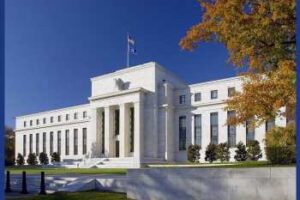Fed Minutes Reveal Debate About Rate Hike After Banking Turmoil

With the collapse of Silicon Valley Bank coming not long before the Federal Reserve’s latest monetary policy meeting, the minutes of the meeting revealed some debate about raising interest rates.
The minutes of the March 21-22 meeting, released Wednesday afternoon, showed some participants considered leaving rates unchanged to allow more time to assess the effects of the banking sector turmoil.
However, these participants also observed that actions taken by the Fed and other government agencies had helped calm conditions in the banking sector.
They consequently determined it would be appropriate to raise interest rates by another 25 basis points in light of elevated inflation and the strength of the recent economic data.
Meanwhile, other partisans noted they would have considered a 50 basis point increase at the meeting given persistently high inflation.
Due to the potential for the banking sector turmoil to tighten financial conditions and weigh on economic activity and inflation, however, they judged it prudent to increase the target range by a smaller increment.
The minutes revealed the staff’s economic projection in light of the banking sector turmoil included a mild recession starting later this year, with a recovery over the subsequent two years.
The Fed ultimately decided to raise the target range for the federal funds rate by another 25 basis points to 4.75 to 5.0 percent, as was widely expected.
While the Fed also said additional policy firming “may be appropriate,” that marked a shift from saying ongoing increases in rates “will be appropriate.”
The minutes noted many participants lowered their forecasts for rates that would be sufficiently restrictive based on the developments in the banking sector.
The projections provided after the meeting suggested the Fed plans to raise rates just one more time this year to a range of 5.0 to 5.25 percent.
Participants determined future rate hikes should take into account the cumulative tightening of monetary policy, the lags with which monetary policy affects economic activity and inflation, and economic and financial developments, the minutes said.
CME Group’s FedWatch Tool currently indicates a 68.5 percent chance the Fed will raise rates by another 25 basis points at its next meeting in early May.
Source: Read Full Article
